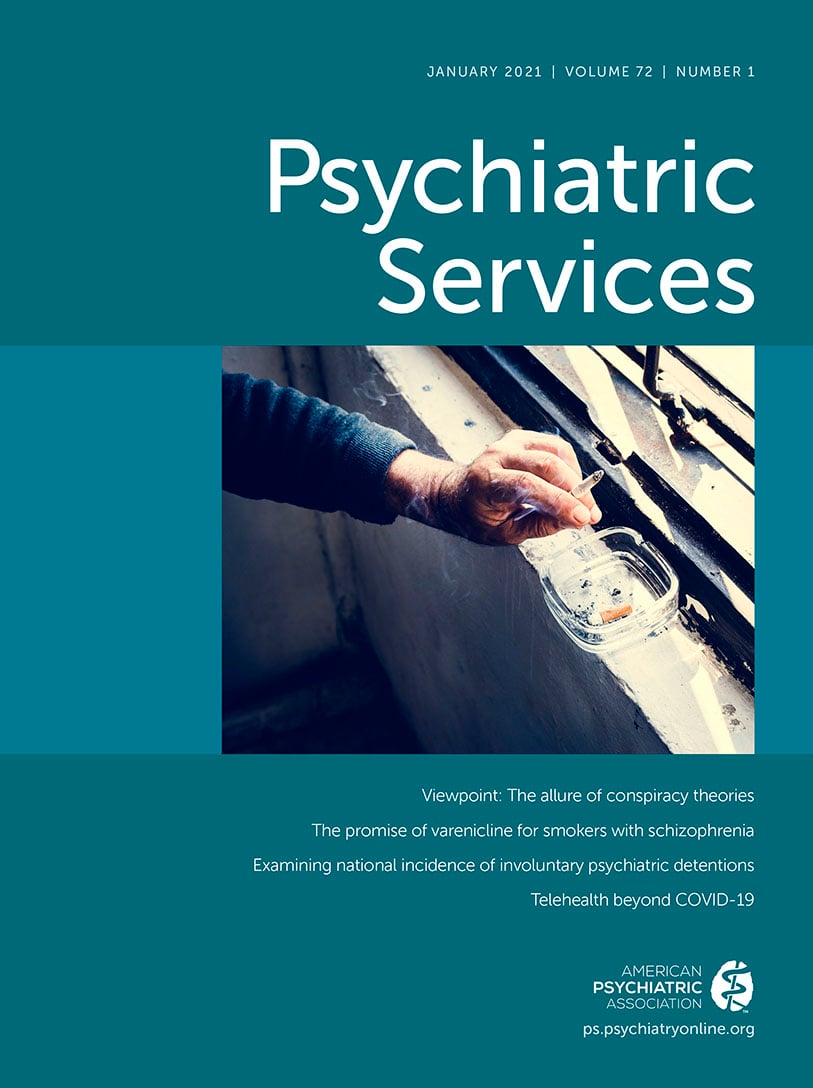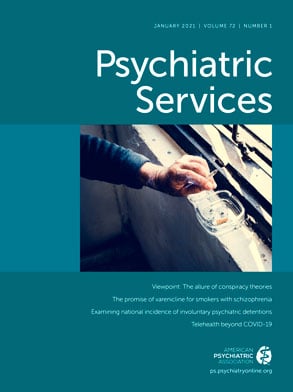Self-determination and shared decision making (SDM) have emerged as key strategies to promote recovery from mental illness. Using these approaches, people with mental illness collaborate with their caregivers to make decisions about life goals and interventions that address their disabilities so they can achieve those goals. However, both of these principles and their corresponding interventions may reflect a Western vision of health care, in which patients are viewed as solitary agents empowered to choose their own treatment options. These values may be embraced less by people from East Asian cultures, where collectivism may limit the benefit of SDM and instead call for a family-centered approach to decision making. In this column, we unpack this assertion by examining differences between European American and East Asian views on health care decision making by adult service users and the role of mental health care providers in that process. In addition, we offer recommendations to providers about how family-centered decision making (FCDM) may be incorporated into their interactions with service recipients.
As in any discussion of culture’s influence on psychiatric services, we must remain mindful that culture is a heterogeneous construct. In some ways, East Asians represent a case study on how decision making may vary across patients and families, and we recognize that differences between, for example, Chinese, Japanese, and Korean patients are likely. Finally, we discuss social determinants, in addition to culture, that may influence the dynamic process of health decisions for patients and their families.
From Adherence to Self-Determination
Why do many adults with serious mental illness not engage in evidence-based interventions (
1)? Providers once believed that many adults with serious mental illness were unable to adhere to treatment recommendations because of the illness itself (e.g., they lacked insight into their symptoms and the benefits treatment might have on the symptoms). Hence, providers felt they needed to find ways to persuade patients to, for example, take their medications. The evolution of recovery-centered systems challenged ideas of adherence in the process of recovery, suggesting that personal life choices (e.g., job, education, or health) should be determined by the persons themselves. Treatment strategies that assist in achieving these goals are undertaken at the discretion of the individual.
Self-determination is choice. This, in part, is an ethical manifesto: that by being human, people have intrinsic rights to choose where they want to live, what they want to do, and how they want to pursue health and wellness. Patient choice is prominent in the statement of President George W. Bush’s New Freedom Commission on Mental Health, which has been endorsed by most state mental health authorities and major advocacy groups. But choice is not just an ethic; it is a psychological reality. People make choices all the time. They drop out of school if they believe it will not help them meet their vocational goals. They take their medications when they perceive the benefit. Health belief models (
2), for example, have framed treatment decisions as person-centered processes influenced by weighing and contrasting the harms of a clinical condition against the benefits of its available treatments. Self-determination theory (SDT) is a more recent evolution of psychological models of health decision making (
3) rooted in three basic needs: relatedness (wanting to interact with and experience caring for others); competence (seeking to control outcome and experience mastery); and autonomy (striving to be a causal agent in one's own life). SDT has provided the conceptual framework for describing SDM, a clinical strategy that reflects the vision of patient-centered medicine.
Shared decision making.
SDM is a well-developed and evaluated approach to self-determination in general health, comprising three strategies: assessment, facilitation, and communication (
4). In this approach, the provider assists individuals to make decisions by aiding in an assessment of the costs and benefits of treatment options. The provider facilitates the assessment by providing information so the patient better understands his or her disease, corresponding treatments, and related parameters. The provider uses communication skills to enhance health-related decision making, which is fundamentally composed of social intercourse between the patient and provider. Skills that enhance qualities of the exchange affect the treatment decision. Research has examined the use of SDM for a variety of illnesses and disabilities—general medical and mental—showing that it leads to enhanced patient satisfaction with their providers and more knowledge about treatments (
5).
Self-determination among East Asians.
Self-determination, with its base in competence and autonomy, may reflect the stereotypical individualistic priorities of Western countries (
6). Cultural values of autonomy, for example, seem contrary to those of relatedness and group cohesion that are important to some East Asian groups (
7). Adopting choices made by trusted others uniquely enhances intrinsic motivation. In this light, it makes sense that many East Asian patients living in the United States may actively involve family members in their decision making. For example, research shows that family dynamics may supersede concerns about self-care among many Asian Americans (
8). Values shared by many Chinese patients seem to include the essential importance of family, deference to authority figures, and maintenance of interpersonal harmony (
6).
Family-centered decisions making.
There is a growing body of work on FCDM for adult patients. The central question is whether and how much family members, especially parents, should actively be involved in health care decision making. One study showed that a group of Korean American patients with cancer had a more significant preference for active family involvement in care-seeking compared with European American patients (
9). Another study, with a sample of Southeast Asian participants, showed that proponents of FCDM might favor withholding information from family members with cancer (
10). Researchers have also identified the importance of FCDM in mental health care among some East Asians. For example, Chinese versus American preferences in decision making were examined in a vignette study (
11) that described two treatment approaches for Lily, a 30-year-old woman with symptoms of depression. With SDM, Lily would be fully informed of interventions, weigh costs and benefits of the options, and make decisions. With FCDM, Lily and her parents would be informed of interventions and consider pros and cons, and the parents would make the decisions. Results showed that European Americans viewed SDM as significantly more preferable to FCDM for Lily, whereas Chinese preferred FCDM.
Developing a manualized approach for FCDM is an important next step, assuming research continues to support FCDM for groups of East Asian patients and their families. Such manuals already have been developed and tested for SDM (
12) and may provide a preliminary framework for developing FCDM. The SDM manual includes steps for educating patients about illness and treatment options, helping them consider pros and cons of individual options, and teaching the provider basic counseling skills to facilitate the interaction. Although many of these principles and practices would seem equally important for FCDM, challenges may emerge in adapting the SDM manual to family-centered practices. The decision-making process needs to be better clarified, especially where multiple family members are concerned. For example, how might a list of pros and cons be generated and who might direct the process? Is consensus a useful paradigm for translating costs and benefits into a decision? How are the values of age and authority and customs related to deference, understood in the process? What if family members have a poor relationship with the service provider? What is the role of the service provider in managing these dynamics?
Considerations for Use of FCDM in Practice and Research
FCDM has an intuitive appeal, but examining the concept of heterogeneity can assist in further understanding the impact of this technique. Namely, we are not suggesting that all East Asian patients will opt for FCDM in their mental health care. For example, Gao et al. (
11) showed that acculturated Chinese—those living in the United States at the time of the study—were more likely to endorse SDM. Moreover, members of other racial-ethnic groups may prefer FCDM. For example, research among Latinx individuals (
12) has described familism and respect as values that are likely to influence family roles in health decision making. Deference shown by adult children to their parents may affect choices about health services. For that matter, service providers should not assume that European Americans, by virtue of their culture, will prefer SDM. The amount of family-centeredness also is likely to vary among patients of Western European heritage.
FCDM processes may vary by other social determinants as well, including gender and age. For example, men are more often viewed as family authorities than women in many East Asian families (
13). Hence, fathers may be viewed as more influential in health decisions, whereas actions based on these decisions may be carried out by mothers. Also, health decisions may change as adult children assume responsibility for health care of older parents with disabilities. Children, for example, may decide not to share a diagnosis with a parent who is challenged by a serious illness with a poor prognosis. Consistent with the above assertion on gender, male children may have the most influence on these kinds of decisions. Interest in FCDM also may vary by psychiatric diagnosis. FCDM may be seen as having greater priority for patients challenged by more disabling illnesses, such as schizophrenia.
Engaging in FCDM is not a monolithic experience. Although development of an FCDM manual will inform providers on how to engage patients in this form of decision making, the manual may not necessarily prescribe a portfolio of required steps. For example, the patient and family may wish to limit the breadth of decisions or change family roles as an illness moves from acute to relatively remitted phases. This latter scenario frames FCDM as a dynamic process in which individual patients change their preferences over the course of illness and treatment. In the process, providers should remember that SDM and FCDM are not independent or static processes, but ones that may be mixed and changed during treatment.
Patients, family members, and providers should also be aware of negative consequences of FCDM. For example, bias, stigma, or language barriers may lead some family members to call for deferring treatment even when deferment is not in the patient’s best interest. The choice between SDM and FCDM may also require ethical considerations. What happens, for example, if the patient and family members disagree about family participation in decision making? As psychiatry has evolved, cognizance of the cultural lens in the interpretation of ethical provider behavior has increased (
14). Still, our interpretation of psychiatry’s principles of medical ethics (
15) prioritizes patient choice, except when patients are minors or are dangerous to themselves or others. Mental health providers ultimately need to promote patient choice with attention to cultural influence.
Considerations for Future Research
Although FCDM intuitively makes sense for treating individuals from cultures that value collectivism, we were surprised by the relative dearth of articles in the professional literature specific to this topic. In fact, the handful of studies summarized in this column were among the few we found in the literature. This literature gap calls for more studies, and such investigations might consider two priorities. First, research should further explain preferences for SDM and FCDM and how cultural heterogeneity affects these preferences. The dynamic and mediating effects of social determinants and psychiatric diagnoses need to be included in this work. Second, effects of FCDM per se should be examined. This requires creation of an FCDM manual and fidelity measures, which could be the focus of randomized controlled trials. These trials could examine feasibility, fidelity, and acceptability, as well as impact on patient health and recovery. Assuming first-generation studies of FCDM are successful, subsequent research should identify individual differences that would help providers tailor FCDM to individual patients.

